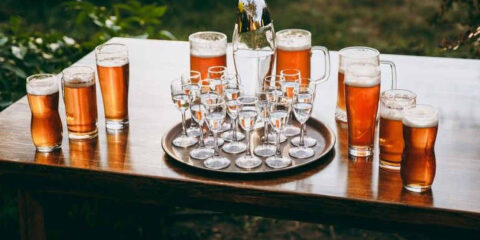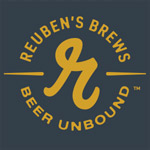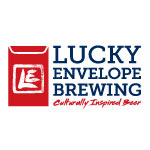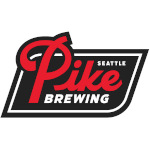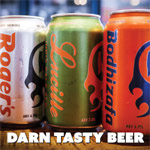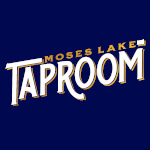Walk into a Washington taproom and in seconds you know if the room wants you to stay, because the best ones mix soul with new polish so the beer shines and the crowd relaxes. Raw timber, welded steel, and clean-lined seating are redefining taproom style across the state. The best brewery rooms strike a balance between coziness and practicality. Concrete floors, polished fixtures, and repurposed barn planks combine to create handcrafted yet modern tasting rooms in Bellingham and Yakima. Drinkers are encouraged to stay, take in the intricacies, and observe how the design decisions enhance the beer experience with this blend.
Behind the Bar Storage and Flow Featuring Abodian’s Custom Cabinets
At 6:00 p.m. rush, storage and layout decide whether the bar hums or hiccups. Sturdy drawers, quiet doors, and durable counters keep staff quick and calm. Behind the bar, simple steel shelving pairs with rift sawn fronts, while Abodian’s custom cabinets handle the storage that keeps glassware organized without distracting from the room’s clean, modern lines.
Designers favor sightlines so guests see taps and staff see tickets. Keep the ice well near the rinse station, provide a sealed trash home, and leave knee room under service counters. The result is faster service and a room that stays clean through the last pour.
The Material Mix That Feels Handcrafted and Current.
The material mix does the heavy lifting. Wood brings warmth and a touch of grain that softens the machinery of brewing. Steel and concrete add backbone and make cleanup simple after a busy release night. Use reclaimed boards for fronts that show character, then seal them well so sticky print rings do not sink in. Pair that with a smooth quartz or sealed butcher block where elbows rest. Edges matter. Ease corners so bags and sleeves do not snag. Add a textile or two, like wool on bench backs or leather straps on menus, to keep the room from feeling cold.
Lighting That Flatters Both Beer and People.
Great lighting flatters both beer and people. Warm ambient light sets the mood, task light keeps the bar precise, and a few accents give stainless tanks a quiet glow. Choose bulbs in the same color temperature to ensure skin looks natural from the table to the bar, and place dimmers within easy reach of staff without requiring them to leave service. Glare kills conversation, so bounce light off wood ceilings or aim it past sightlines. A slight glow at the menu board helps guests decide faster, which shortens the line and makes the night feel smooth.
Sound That Lets Conversation Breathe.
Sound shapes memory as much as flavor. Rigid walls bounce chatter, so mix in acoustic panels, wood slats, and a few upholstered zones. You want hum, not echo. Keep music lively on game days and softer on school nights, with volume that lets a parent order without shouting. High ceilings look dramatic, yet they can tire ears. Simple tricks help, like hanging felt baffles above the bar and placing plants along the brick to break up reflections during busy weekend crowds.
Seating Zones for Different Moods.
Great taprooms plan for different moods. Communal tables welcome groups and release nervous energy before a big match. A pair of lounge chairs by a window gives dates a quiet corner. Slim ledges along walls turn a quick taster into a comfortable pause. Offer a kid-friendly table near the door and a dog-friendly patio with clear rules, and the room stays relaxed. Circulation should read like a simple path so servers glide and strollers pass without bumps. Small moves like bag hooks make friends for life and smiles.
Menus, Wayfinding, and Brand Moments.
Menus and signs should feel like part of the room. Chalk on oak, enamel on brick, or a digital board can all work if the type is clear. Keep the beer list readable at ten feet and teach staff to update it in seconds. Use color from can art as small accents on stools or coasters, not a flood on every wall. Tap handles tell a story, too, so match their shape and finish to the mood of the space.
Sustainability That Shows Up in Quiet Ways.
Sustainability shows up in quiet choices that last. Reclaim lumber from barns and mill shops, then source pieces from regional suppliers to cut travel. Pick finishes with low VOC, so the room smells like malt and hops, not solvent. LED lighting trims bills and keeps heat down in summer. Insulation and vestibules help crowds feel cozy without blasting heat. When a brewery reuses an old building, permits and layout need care, yet the payoff is character that you cannot fake.
Quick Snapshots From around Washington.
Across the state, conversions tell fun stories. In Ballard, a retired warehouse keeps its tall doors and rough beams, while soft textiles and warm pendants bring comfort, so long tables stay full past last call. Down in Yakima, a room nods to agriculture with hop bines framed as art and stools wrapped in weathered wood, yet the plan stays crisp and uncluttered. In Spokane, old brick holds a modern mix of light chairs and bright art that lifts the mood without drowning the grain that gives the room its soul.
A Practical Checklist for Owners and Designers.
Checklist for owners and designers. Start with floor drains and durable sealers. Choose tables that can scoot without wobbles. Specify door hardware that will not pinch fingers. Plan power at the host, bar, and cooler. Budget for acoustics. Mock a service rush before opening training staff on lighting and signage updates. Then track a guest path from door to last sip. Rustic meets modern because people want comfort and clarity. Next visit, take note of the details, and raise a glass to the rooms.


